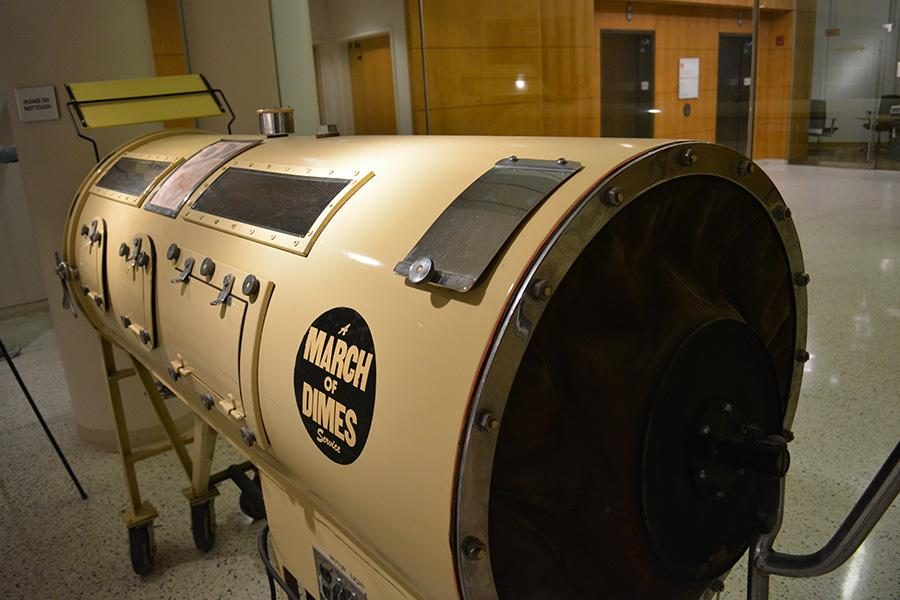Alums remembered for polio vaccine
November 3, 2014
The fear surrounding the current Ebola epidemic has drawn some comparisons to the influx in polio cases in the early 1950s. David Oshinsky, who won the Pulitzer Prize for his work, “Polio: An American Story,” is director of the Division of Medical Humanities at NYU Langone Medical Center, which is now showcasing an exhibit about the polio epidemic.
“The difference, of course, was that polio was a yearly occurrence to Americans, arriving like the plague each summer and paralyzing and killing thousands of children,” Oshinsky said. “The fear was palpable.”
“Confronting the Epidemic,” which runs until Nov. 7, commemorates Jonas Salk and Albert Sabin, both NYU School of Medicine graduates who developed the polio vaccine.
“It was no accident that both men attended NYU, and that both went on to become path-breaking polio vaccine researchers,” Oshinsky said. “NYU was the only major medical school in the Northeast that did not have a ‘Jewish’ quota in the 1930s, when Salk and Sabin applied. NYU provided a lifeline to young Jewish students.”
Salk and Sabin both worked on researching and developing the vaccine after there was an influx in the number of polio cases in the early 1950s. NYU’s reputation as a research institution is often an important reason that students like CAS sophomore Ian Passman choose to study at NYU.
“It’s definitely inspirational to know that such a significant discovery came out of the school that I go to,” Passman said. “It makes achievements like that feel more tangible and possible. Research is what I want to do, so this definitely resonates on a personal level.”
The exhibit showcases a small vial of Salk’s polio vaccine, Sabin’s box of polio slides, an Emerson iron lung respirator and an original Candy Land board game, invented by and for polio patients.
Oshinsky said much of the country was in a state of fear about the disease.
“We all stayed away from crowds,” Oshinsky said. “The newspapers kept daily box scores of kids entering the polio wards, with terrifying photos of wheelchairs, leg braces and iron lungs … That’s why everybody rallied around the massive polio vaccine trials of 1954 … Parents couldn’t vaccinate their children fast enough, and they were right. That choice was the absolutely crucial in eradicating the disease.”
Eventually, polio was cured through Salk and Sabin’s vaccine. Oshinsky believes that the future of Ebola will follow a similar pattern.
“There is little doubt that an Ebola vaccine is coming,” Oshinsky said. “Trials in Africa will begin in December. The effort is being fast-tracked, and the result should produce an effective vaccine in the near future. But nature is always a step ahead. Ebola will be defeated, but another microbe will rise up to take its place. That’s the nature of the beast. We must understand the process and be prepared for it.”
A version of this article appeared in the Monday, Nov. 3 print edition. Email Amanda Morris at [email protected].

























































































































































Ted Granger • Nov 8, 2014 at 3:34 pm
Dear Amanda Morris.
Polio cannot be cured as you state – only prevented. Too bad so many people believe that but once contracted – one lives the rest of his or her life dealing with its aftermath. Tragically, many are willing to take the chance their child will be cured IF they get it – but lesson will be learned too late. Your misinformation could cause a tragic choice to not vaccinate to prevent it – the only thig that can be done.